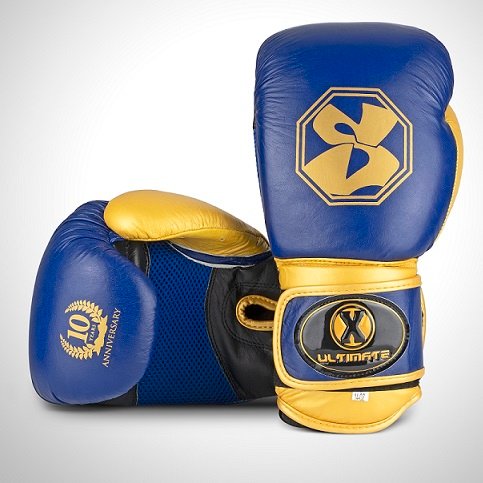
Is HIIT A Hit For Fighters?

As anyone who has stepped foot in the boxing ring will be able to tell you, fitness is everything. It’s no good having all the skill in the world only to go and gas out in 2 rounds.
So fighters find the best possible ways to boost their fitness fast and effectively, as not only will they want to make sure they last the distance but to out-work their opponent too. The most crucial aspect for a fighter is to prioritise their training in their specific combat sport to maximise their overall skill.
As a way of boosting fitness, many fighters since day one have found simply running in their spare time as a great way to increase their fitness and endurance. However, much running can become tedious, so it is good to spice up your training to keep focused.
There are many different ways for fighters to exercise to mix up their routine to prevent it from getting stale and target other muscles and coordination techniques. One popular current trend of exercise which has become a big craze and is also very fun is HIIT.
HIIT workouts can give a full-body workout in each class.

What is HIIT?
HIIT stands for High-intensity interval training, a workout style where you alternate between short bursts of intense activity and short rest periods.
HIIT and combat sports training can work hand-in-hand together, as, by nature, they both use short and hyper-intense blasts.
Yet, HIIT is a zero contact class, so as much as we all love our combat sports, it is pretty nice to do a class and not get punched. HIIT is a great way to get fit in a short amount of time, and it can also help you lose weight.
You can incorporate HIIT into your current fitness routine or do a full-on HIIT workout: the choice is yours.
Everyone Active suggests: ‘A HIIT workout session involves you doing intervals of exercise between 10 seconds and eight minutes in duration, with you working at around 80-90% of your maximum heart rate for that period.
If you don’t have a heart rate monitor (and not many of us do), then you can use a mental scale of 1-10 to measure your effort level instead, with one being sitting on the sofa relaxing and ten feeling like you can’t do any more.’
Source: https://www.everyoneactive.com/content-hub/fitness/what-is-hiit-training-benefits-exercises/

What are the Two Types of HIIT?
HIIT training is intense interval training, and there are two types that you can do.
- SIT
This is a very intense interval training that only already fit individuals should perform this type.
You do 3–5 intervals of concise maximal-intensity exercise until you can’t sustain the intensity anymore, then rest for a lengthy time.
Typically, a 3-5 minute rest period would follow 20–30 seconds of work by a 3–5 minute rest period.
- HIT
HIT stands for High-Intensity Training, which is not to be confused with ‘HIIT’. This is a less strenuous variant of HIIT exercise, making it more suitable for the average gym-goer.
This involves working at 80–100% of your maximum heart rate for 30 seconds to three minutes at a time, with shorter recovery intervals than SIT.
Although there is no specific formula for HIT, your recovery period should be at least as long as your work interval, and it can get shorter as you get stronger.
Take a look at this HIIT workout tutorial below:
The Benefits of HIIT
HIIT workouts are great for sculpting and toning your muscles, but that’s not their only function. HIIT has been shown to increase the calories you burn both during and after your workout sessions.
This is because HIIT workouts increase hormones like epinephrine and norepinephrine, which increase your metabolic rate. As a result, you burn more calories even after you’re done working out.
Source: 5 Factors That Affect Your Metabolism | Lumen. https://lumen.me/blog/science/5-factors-that-affect-your-metabolism
Furthermore, the way the class is structured with low rest time it’s perfect for endurance training.
WebMD suggests: ‘You’ll lose weight, build muscle, and boost your metabolism. Plus, there’s a post-workout bonus: Your body will burn calories for about 2 hours after you exercise.’
Source: https://www.webmd.com/fitness-exercise/a-z/high-intensity-interval-training-hiit
HIIT Recovery Phase
After these high-intensity intervals, there are recuperation periods. These can include coming to a complete stop or moving to a lower-intensity activity, such as jogging instead of sprinting. Your recovery periods will vary based on the type of session you’re undertaking.
HRV can be used to analyse post-exercise recovery and determine how long it takes for HRV to return to pre-exercise values. HRV typically takes about 24 hours to recover after low-intensity (70 percent VO2max) sessions, 24-48 hours after threshold-intensity (70-82 percent VO2max) work, and >48 hours after HIIT (>82 percent VO2max) activity (11).
HIIT Science suggests: ‘However, research has established this trend across passive recovery periods without other training content, limiting high-performance programs’ practical relevance. That’s not how our athlete’s train, with 2-4 sessions per day being more typical in our elite.’
Source: https://hiitscience.com/hiit-recovery-how-long-till-my-next-hiit/

What to Expect in a HIIT Class?
To be challenging is an excellent way to describe it. In each HIIT class, they may vary how they do it.
The course almost runs consistently with a minimal rest period. The timer will count for around a minute with one exercise, a break of 10 seconds and then straight back into a different routine.
It continues like this for anywhere between 30-60 minutes for the entire class.
Where Can I do HIIT Classes?
Many gyms and clubs, including martial arts schools, offer HIIT classes in their timetable with its vast popularity.
HIIT Workout at Home
If there are no local gyms with HIIT classes, why not give it a go at home. Do this three-move half-hour kickboxing HIIT circuit to torch fat fast.
All you need is a heavy bag and some decent boxing gloves, and this HIIT is a treat for any combat sports practitioner—boosting strength, cardio, and skill.
Start with continuous straight punches for 20 seconds, then 20 seconds of hooks, followed by 20 seconds of alternate front kicks.
At the end of the minute, rest for 20 seconds and then return to it. It would be best if you repeat each circuit ten times.
Rest for two minutes and go again for another ten sets.
If you want to do HIIT watching a video, Joe Wicks has many videos online that you can easily do at home.
He also has beginner classes which have 30 seconds of work and 30 seconds of rest.
Final Thoughts
HIIT is a great fun way to get fit fast and helps lose weight. However, make sure HIIT is an added workout and not replacing your usual sparring and training regime as a fighter.
For more information about HIIT workouts, please take a look at the video below:







